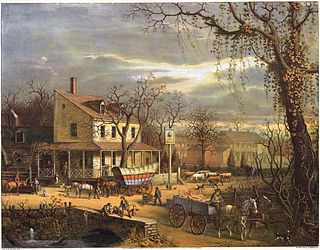
Inns are generally establishments or buildings where travelers can seek lodging, and usually, food and drink. Inns are typically located in the country or along a highway. Before the advent of motorized transportation, they also provided accommodation for horses.

The Scotch Piper Inn in Lydiate, North West, England is the oldest pub in the historic county of Lancashire. The building dates from 1320 and is a Grade II* listed building.
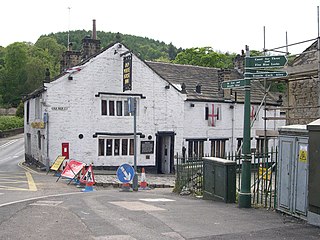
The Old White Horse Inn in Bingley, West Yorkshire, England, is one of the oldest buildings still in use in the town. It was originally constructed as a coaching inn in the mid-seventeenth century, strategically positioned with Ireland Bridge on the one side and the Parish church on the other. The building is an English Grade II listed building and has a significant amount of coaching inn infrastructure surviving including a stable, barn and two coach entrances which are located around an inner courtyard. On each side of the gable are stone lanterns that denote the former owners Order of Knights of St John of Jerusalem. There is evidence that a hostelry has been on the site since 1379.

The Golden Fleece is an inn in York, England, which has a free house pub on the ground floor and four guest bedrooms above. It dates back to at least the early 16th century, and claims to be the most haunted public house in York.

Ye Olde Man & Scythe is a public house on Churchgate in Bolton, England. The earliest recorded mention of its name is in a charter from 1251, making it one of the ten oldest public houses in Britain and the oldest in Bolton. The present form of the name, prefixed with "Ye Olde", is a pseudoarchaism derived from the Man and Scythe Inn; it derives from the crest of the Pilkington family, which consists of a reaper using a scythe, alluding to a tradition about one of the early members of the family.

Mabgate is an inner city area of Leeds, West Yorkshire, England and the name of one of its streets. In Leeds City Council's Mabgate Development Framework (2007), "the area is bounded to the west by North Street; to the east by Macaulay Street; to the north by Mushroom Street and to the south by the New York Road". Mabgate, the street, continues for a short distance on the south side of New York Road. The area is in the Burmantofts and Richmond Hill ward of Leeds City Council. The area to the west of Regent Street is within the city centre boundary.
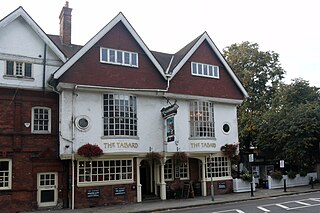
The block of three buildings containing The Tabard public house is a Grade II* listed structure in Chiswick, London. The block, with a row of seven gables in its roof, was designed by Norman Shaw in 1880 as part of the community focus of the Bedford Park garden suburb. The block contains the Bedford Park Stores, once a co-operative, and a house for the manager.

The Royal Oak is a Grade II-listed house in Frindsbury, a Medway town in Kent, United Kingdom. The building dates from the late 17th century and it was used as a public house since before 1754. It is one of a few pre-Victorian buildings on Cooling Road in Frindsbury and one of the last remaining coach houses in the area.
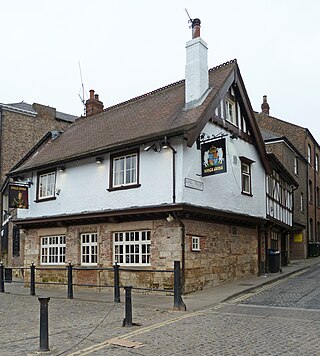
The Kings Arms is a pub lying by the River Ouse in the city centre of York, in England.
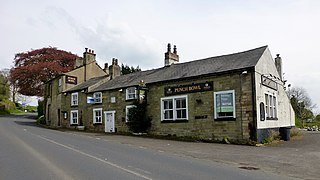
The Punch Bowl Inn was an 18th-century grade II-listed public house in Hurst Green, Ribble Valley, Lancashire, England. It consisted of a number of independent buildings, including what were originally two cottages and a barn, and a 19th-century extension. The pub was reputed to be haunted by the ghost of a highwayman. The pub closed in 2012 and afterwards stood empty. It was demolished in June 2021 without any planning permission to do so and an investigation followed, leading Ribble Valley Council to instruct the owners to rebuild it.
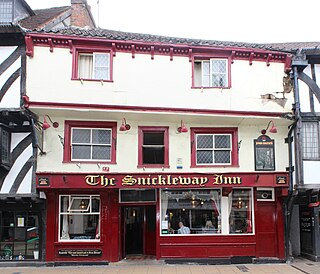
The Snickleway Inn is a grade II* listed pub, in the city centre of York, in England.

The Red Lion is a pub in the city centre of York, in England.

64 and 66 Low Petergate is a grade II* listed building, in the city centre of York, in England.

The Three Tuns is a pub on Coppergate, in the city centre of York, in England.

The Windmill Inn is a pub on Blossom Street, immediately west of the city centre of York, in England.

28–32 Coppergate is a historic building in the city centre of York, in England.

43 Stonegate is a historic, Grade II* listed building in the city centre of York, in England.
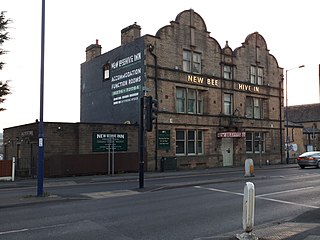
The New Beehive Inn is a former pub in Bradford, England. It was built by Bradford Corporation in 1901 to replace an existing public house of the same name that they had purchased in 1889 and demolished to widen a road. The corporation intended to run the pub itself but instead let it out and sold it in 1926. It has since been run by a number of brewery companies and individuals. The pub contained many features dating to its construction and a significant refurbishment in 1936 and was described by the Campaign for Real Ale as "one of the country's very best historic pub interiors".

Roots is a restaurant on Marygate, just north of the city centre of York in England.

The Angel and White Horse is a pub in the town centre of Tadcaster, in North Yorkshire, in England.




















